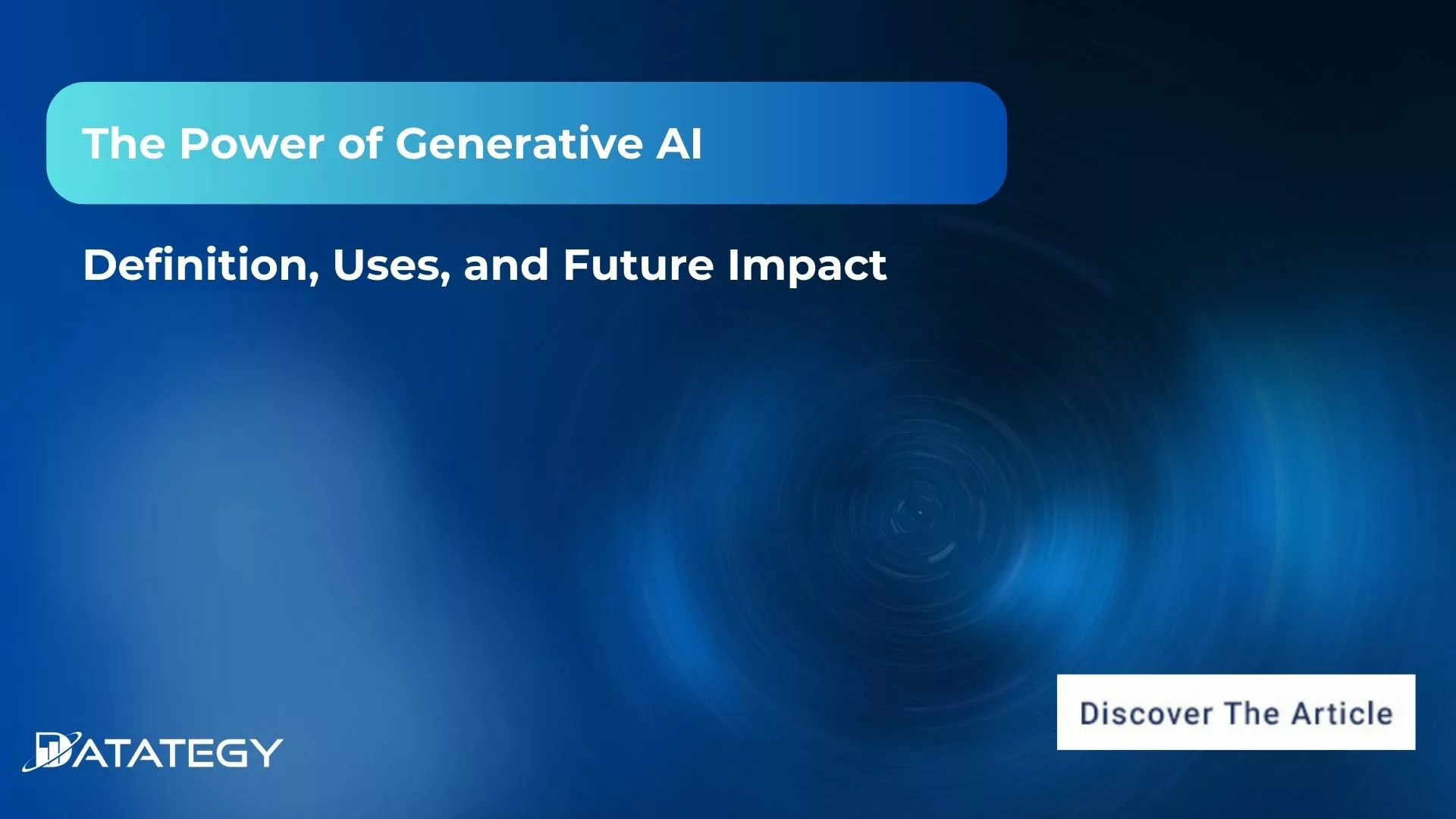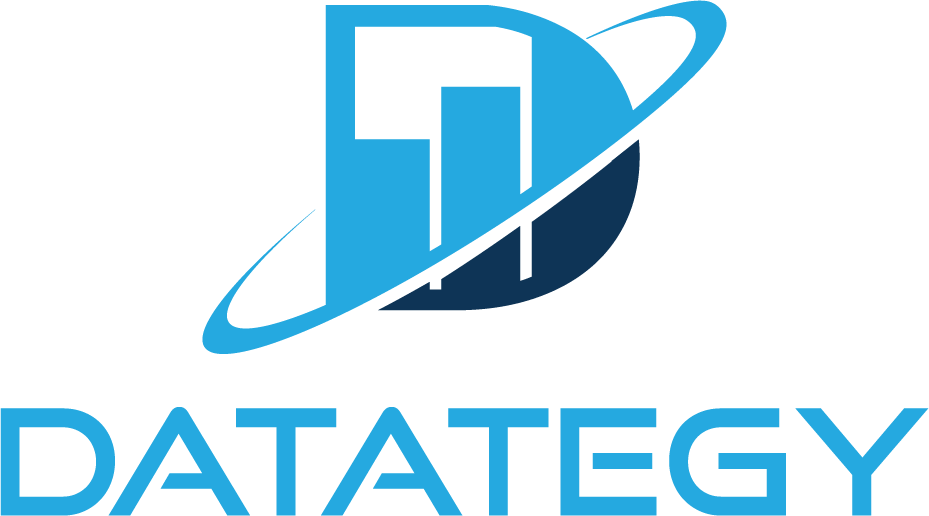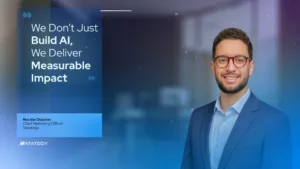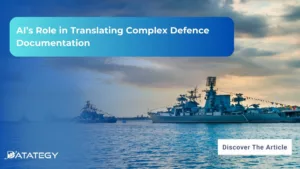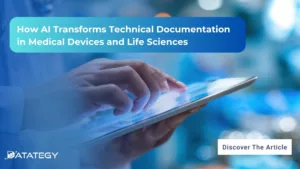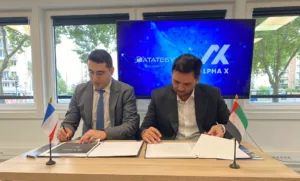We Don’t Just Build AI, We Deliver Measurable Impact Join...
Read MoreGenerative AI: Definition, Uses, and Future Impact
Table of Contents
ToggleYou’ve probably heard the term “Generative AI” in almost every discussion about artificial intelligence, but what does it mean? By learning patterns from existing data, generative AI, in contrast to traditional AI, which usually adheres to pre-established rules, can produce new content, including text, images, music, and even entire designs.
92% of Fortune 500 companies are integrating generative AI into their operations.(Source PWC)
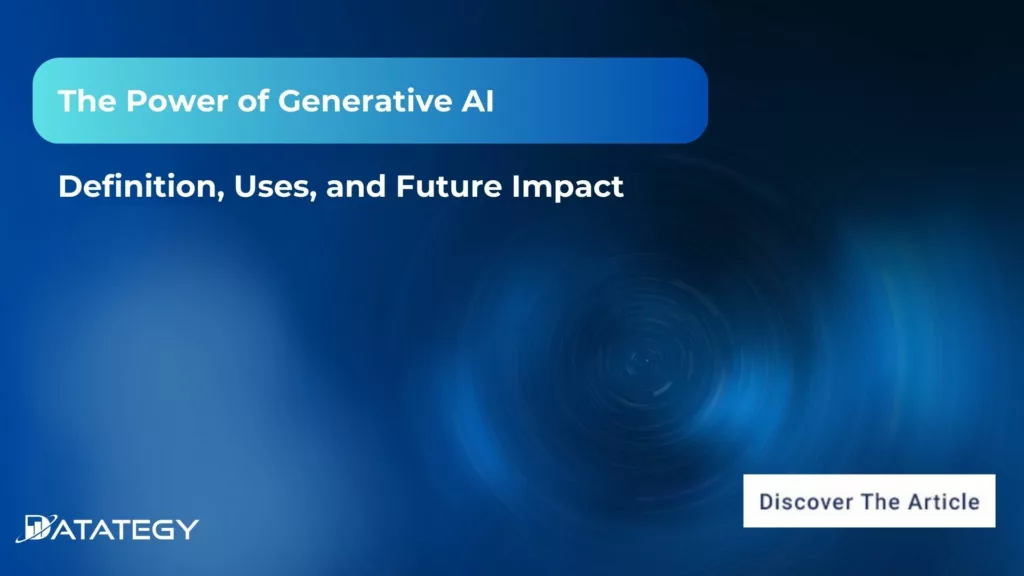
This article aims to deconstruct the notion of generative AI and examine its practical applications in transforming industries and expanding the frontiers of innovation.
What does Generative AI mean?
The term “`Generative AI ” describes a subset of AI that can produce original content using the training data. Generative AI goes above and beyond traditional AI by producing entirely new outputs instead of just following predetermined instructions to accomplish tasks. Images, text, music, and even whole videos can be included in these.
With the help of enormous amounts of preexisting data, the AI can learn to recognize patterns and produce unique content. Differentiating it from other types of AI, its capacity to “generate” makes it more adaptable and imaginative.
Generative AI differs from traditional AI in its ability to create new content rather than just analyze or process existing data. The process of learning is another important distinction. Supervised learning, in which the system is trained with labeled data and learns to accomplish particular tasks, is a major component of traditional AI models.
In contrast, generative AI frequently employs unsupervised or semi-supervised learning, enabling it to pick up new skills without rigorous supervision. Large datasets can be used to find patterns, and then it can use those patterns to create entirely new outputs. While traditional AI tends to concentrate on more accurately carrying out predefined tasks, generative AI is more dynamic and flexible due to its creative capability, which enables it to generate new ideas or solutions.
Key technologies behind Generative AI
Deep learning and machine learning:
Deep learning and machine learning are the two main cutting-edge technologies that underpin generative AI. Generative Adversarial Networks (GANs) are a key technology enabling generative AI. Two neural networks make up a GAN: the discriminator, which evaluates the data, and the generator, which generates new data.
Together, these two networks form a feedback loop in which the generator attempts to enhance its outputs in response to feedback from the discriminator. Because of this process, GANs can produce incredibly realistic images, videos, and other content, which makes them a vital tool in a variety of fields, including media, design, and even science research.
The transformer model:
The transformer model, a key component of generative AI, has transformed natural language processing (NLP). By examining linguistic patterns in enormous datasets, transformers such as GPT (Generative Pre-trained Transformer) are exceptionally good at comprehending and producing text that resembles that of a human.
This makes them effective tools for a variety of tasks, such as creating code, having meaningful conversations, and writing essays and article summaries. Transformer models are essential to AI-driven language models and creative applications because of their versatility.
Applications of Generative AI
Text Generation
By automating and streamlining the writing process, generative AI has completely changed the production of text-based content. AI systems such as GPT-4 are capable of producing text that is human-like and coherent on a variety of subjects, including product descriptions and lengthy articles.
Companies are using this technology to make customer service responses, marketing content creation, and blog writing more efficient. Generative AI helps businesses save time while maintaining consistency and quality in their communications by automating routine writing tasks.
Generative AI is also being used as a potent brainstorming tool in the creative industries. AI is being used by writers, marketers, and content producers to create storylines, write screenplays, and even generate creative ideas for advertising campaigns. AI-generated text can act as a source of inspiration, enabling authors to investigate novel ideas or improve upon already completed works. With AI supporting human writers rather than taking their place, this partnership between human creativity and AI technology is enabling a more dynamic and effective content creation process.
Images Creation
The ability of machines to create amazing visuals from scratch thanks to generative AI is having a significant impact on the image creation industry. This revolution is being led by tools like Generative Adversarial Networks (GANs), which allow AI to produce realistic graphics, art, and images that are indistinguishable from those created by humans.
AI is helping companies and artists create high-quality images faster and more effectively than ever before, from digital art and product designs to social media graphics and marketing materials. With the help of this technology, designers now have greater creative freedom and space to explore.
Generative AI is being used not only to create new images but also to improve and alter already existing ones. AI-powered tools, for instance, can improve image quality, automatically edit photos, or even turn sketches into finished designs. This is especially helpful for fields where visual aesthetics are important, like fashion, architecture, and graphic design. AI can speed up the design process by producing rapid mockups or concept variations, which let designers iterate more quickly and concentrate on honing their concepts.
Videos Production
Thanks to AI, producers can now produce excellent video content from straightforward text instructions or even unprocessed data. This is especially helpful for marketing-related businesses, as AI can create explainer videos, product demos, and promotional videos automatically in a fraction of the time it would take a human team. Businesses can scale the production of their video content by utilizing generative AI, which enables them to meet the increasing demand for visually engaging content without sacrificing creativity or quality.
AI is being utilized in film and entertainment to improve visual effects and animations in addition to automating the creation of videos. AI is capable of producing lifelike animations, editing videos, and even creating digital actors to be used in stunts or special effects.
Filmmakers and other content producers can now push the limits of visual storytelling and realize their ideas with a level of accuracy and adaptability never before possible thanks to technology. Generative AI isn’t just being used in Hollywood to produce videos; independent filmmakers and smaller studios are finding it to be a useful resource for producing eye-catching images on a shoestring.
Music Creation
The ability of machines to produce unique sounds, music, and even voices thanks to generative AI is revolutionizing the production of audio content. AI is capable of analyzing enormous volumes of audio data to identify speech patterns, musical genres, and soundscapes.
It can then use these insights to produce new compositions or sound effects that closely resemble audio produced by humans. Artificial intelligence-generated music is being used in the film industry for everything from jingles to background scores. In addition to expediting the production process, automation gives sound designers and musicians new creative freedom by producing ideas they can expand upon or improve.
Virtual reality (VR) and video games, which offer immersive audio experiences, are using AI’s sound generation capabilities. Artificial Intelligence contributes to the creation of immersive and lifelike audio landscapes by producing dynamic sound effects that respond to user actions or environmental changes. This improves the user experience overall and lets developers save time on sound design.
Generative AI is changing the audio content creation process by producing voices, music, and sound effects. This makes audio content more versatile and accessible for creators in a variety of industries.
A to Z of Generative AI: An in-Depth Glossary
A form of artificial intelligence called “Generative AI” enables machines to produce text, pictures, and music on their own. By automating activities, improving customization, and encouraging innovation, it is revolutionizing industries by using the power of algorithms and deep learning. This guide will provide you with a solid foundation in Gen AI terminology to help you better understand this exciting field.
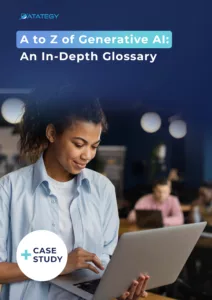
Emerging trends and opportunities
Context-Aware Generative AI using papAI 7
Overview of papAI 7
papAI is a comprehensive AI solution designed to facilitate the seamless deployment and scaling of data science and AI projects by businesses. papAI was created with teamwork as its primary focus. It enables groups to collaborate effectively on a single platform, simplifying challenging jobs and optimizing workflows.
It provides a comprehensive set of tools, including sophisticated machine learning methods, model deployment choices, data visualization, exploration, and robust data cleaning capabilities—all conveniently located in one location. Organizations can take on their most difficult projects with PapAI and maintain their agility and competitiveness in the rapidly changing AI market.
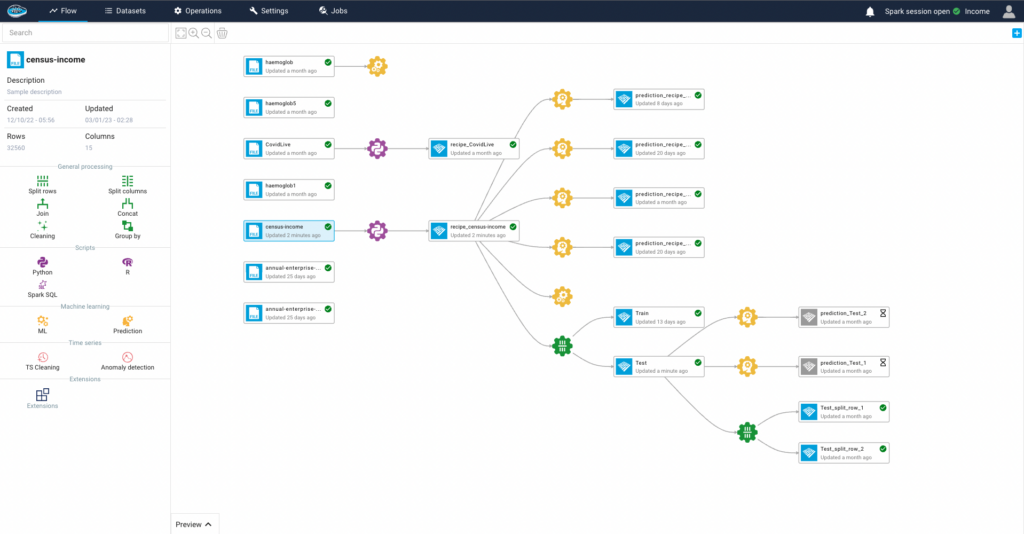
Context-Aware Generative AI: What Does It Mean?
“Context-Aware Generative AI” refers to the capability of AI not only to generate content but to do so with an understanding of its environment and the specific needs at hand. This type of AI goes beyond simply processing raw data; it factors in contextual elements—like the who, what, where, when, and why—allowing it to generate responses or content that is much more aligned with human understanding.
For example, with the latest version of papAI, users can set specific parameters, such as the length of a product description. Based on this, the AI can craft tailored descriptions for different purposes—whether it’s for an online store, social media, or internal brochures—while adhering to the unique requirements of each platform. This adaptability ensures that content fits seamlessly into its intended context, enhancing both its relevance and effectiveness.
Harnessing the Power of Large Language Models for More Precision
Large Language Models (LLMs) have revolutionized AI by enabling machines to understand and generate human-like text. Pre-trained on vast datasets, these models excel at mimicking linguistic patterns and producing coherent writing. However, their true potential is unlocked when they are optimized for context, allowing them to move beyond basic coherence and deliver outputs that are highly relevant to specific situations.
By fine-tuning LLMs for particular industries, domains, or applications, their general language skills become more specialized. While pre-training provides a broad understanding of language, fine-tuning sharpens their ability to grasp the specific nuances of real-world use cases. This enhances the model’s ability to not only generate accurate content but also tailor it to meet the needs of distinct audiences and purposes.
When fine-tuned, LLMs can produce text that is both linguistically precise and contextually appropriate. Whether it’s adapting tone for different platforms, aligning with industry-specific terminology, or personalizing content based on user input, these models are highly adept at delivering content that resonates with the intended context and audience.
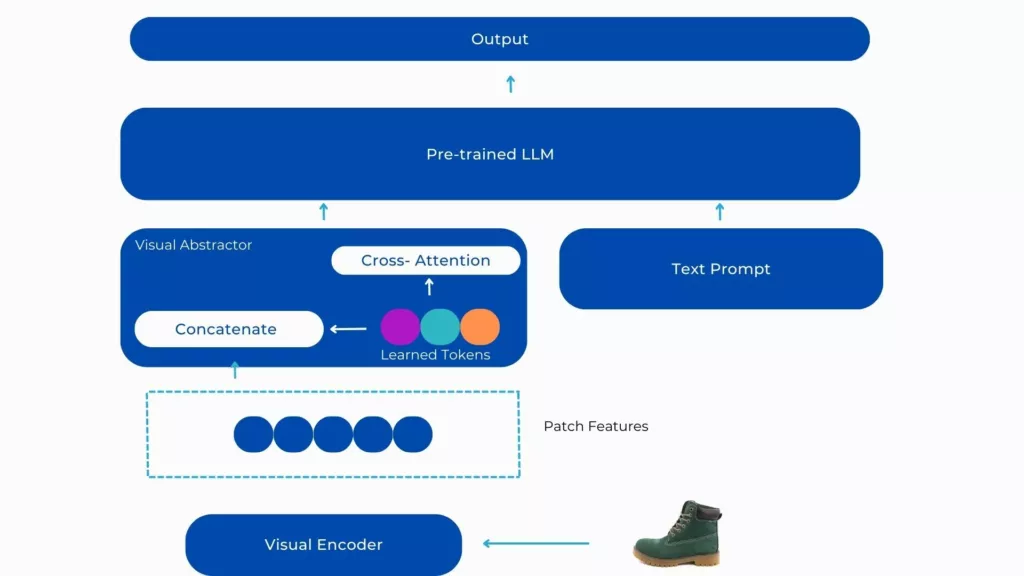
mPLUG-Owl architecture for improved image captioning using LLMs
Case Study: From Concepts to Tangible Content - Watch papAI 7 Demonstration
Watch the papAI7 demo and redefine your possibilities, this live demo shows off the innovative prowess of the latest iteration of papAI, which promises to revolutionize content creation by harnessing the power of #adaptability and #scalability:
Interested in discovering papAI?
Our AI expert team is at your disposal for any questions
AI’s Role in Translating Complex Defence Documentation
AI’s Role in Translating Complex Defence Documentation The defence sector...
Read MoreHow AI Transforms Technical Documentation in Medical Devices and Life Sciences
How AI Transforms Technical Documentation in Medical Devices and Life...
Read MoreDatategy and Alpha X Join Forces to Strengthen AI-Driven Governance Across EMEA
Datategy and Alpha X Join Forces to Strengthen AI-Driven Governance...
Read More